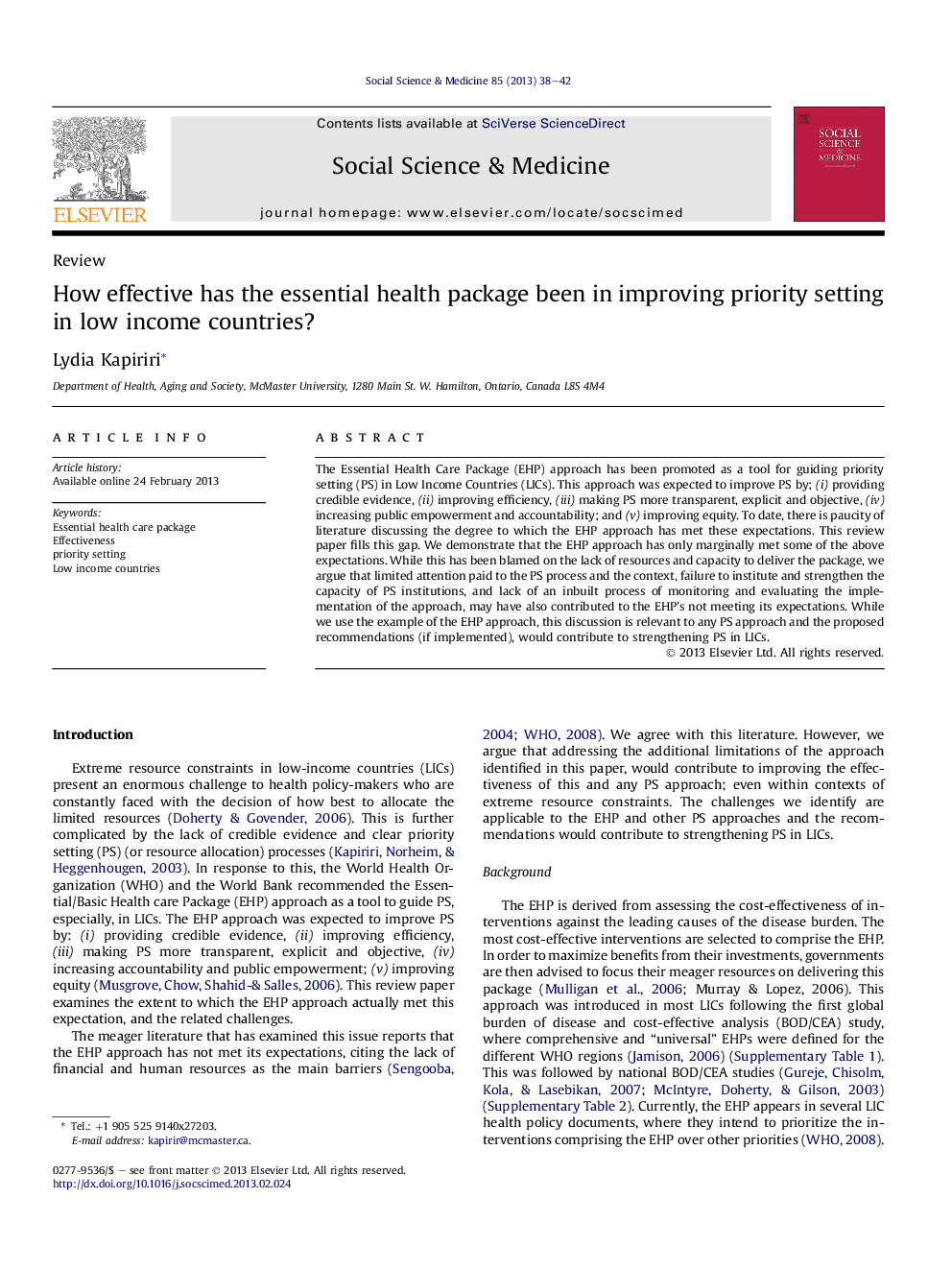| Article ID | Journal | Published Year | Pages | File Type |
|---|---|---|---|---|
| 952313 | Social Science & Medicine | 2013 | 5 Pages |
The Essential Health Care Package (EHP) approach has been promoted as a tool for guiding priority setting (PS) in Low Income Countries (LICs). This approach was expected to improve PS by; (i) providing credible evidence, (ii) improving efficiency, (iii) making PS more transparent, explicit and objective, (iv) increasing public empowerment and accountability; and (v) improving equity. To date, there is paucity of literature discussing the degree to which the EHP approach has met these expectations. This review paper fills this gap. We demonstrate that the EHP approach has only marginally met some of the above expectations. While this has been blamed on the lack of resources and capacity to deliver the package, we argue that limited attention paid to the PS process and the context, failure to institute and strengthen the capacity of PS institutions, and lack of an inbuilt process of monitoring and evaluating the implementation of the approach, may have also contributed to the EHP's not meeting its expectations. While we use the example of the EHP approach, this discussion is relevant to any PS approach and the proposed recommendations (if implemented), would contribute to strengthening PS in LICs.
► How effective has the Essential Health Package approach been at improving low income country priority setting? ► Current literature attributes the limited impact to lack of human and financial resources. ► This review paper identifies weak institutions, “poor” evidence and limited focus on the process as additional limitations. ► Addressing limitations of the EHP and exposing planners to additional approaches would strengthen priority setting. ► There's need for more systematic, empirical evaluation of how this approach has contributed to improving priority setting.
